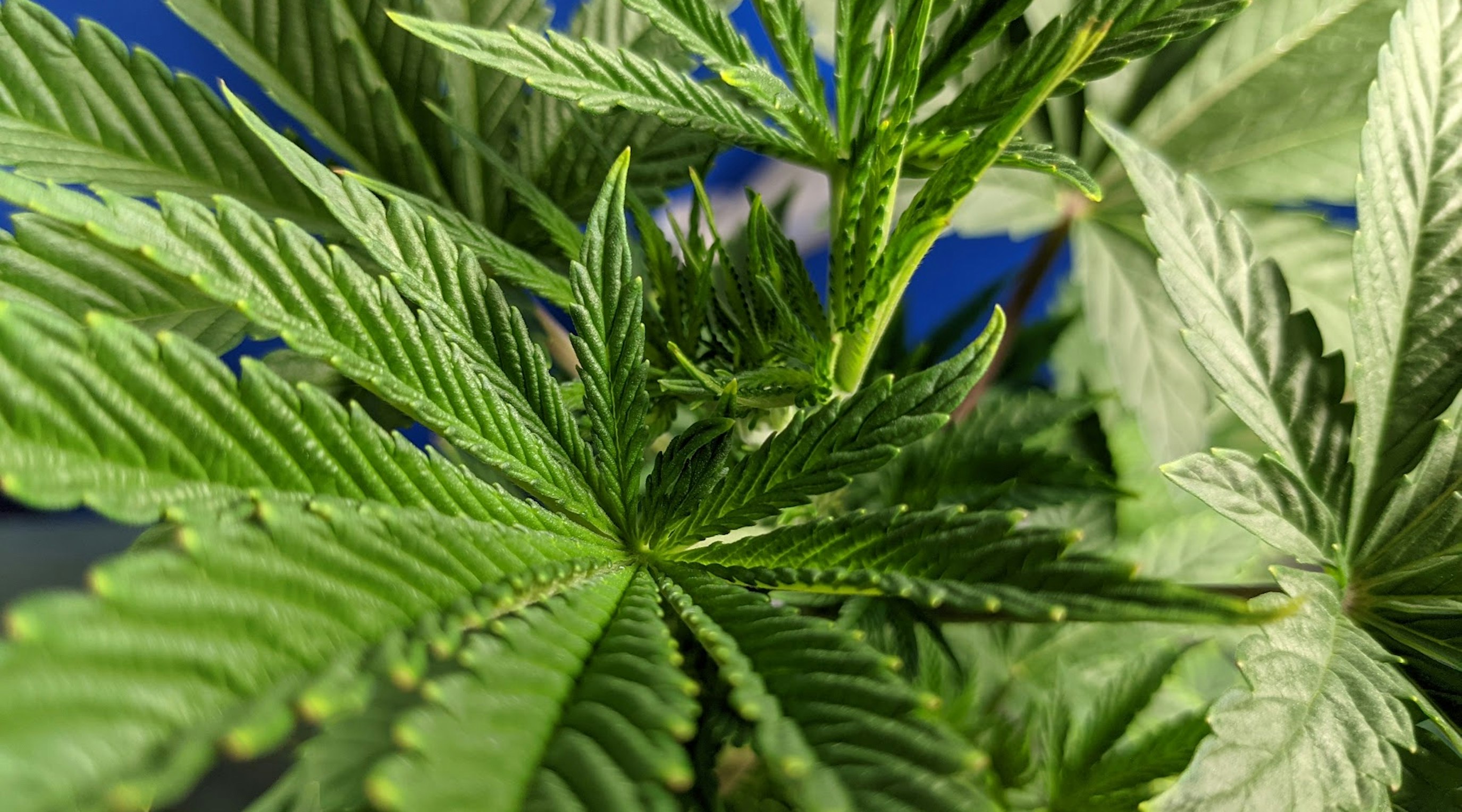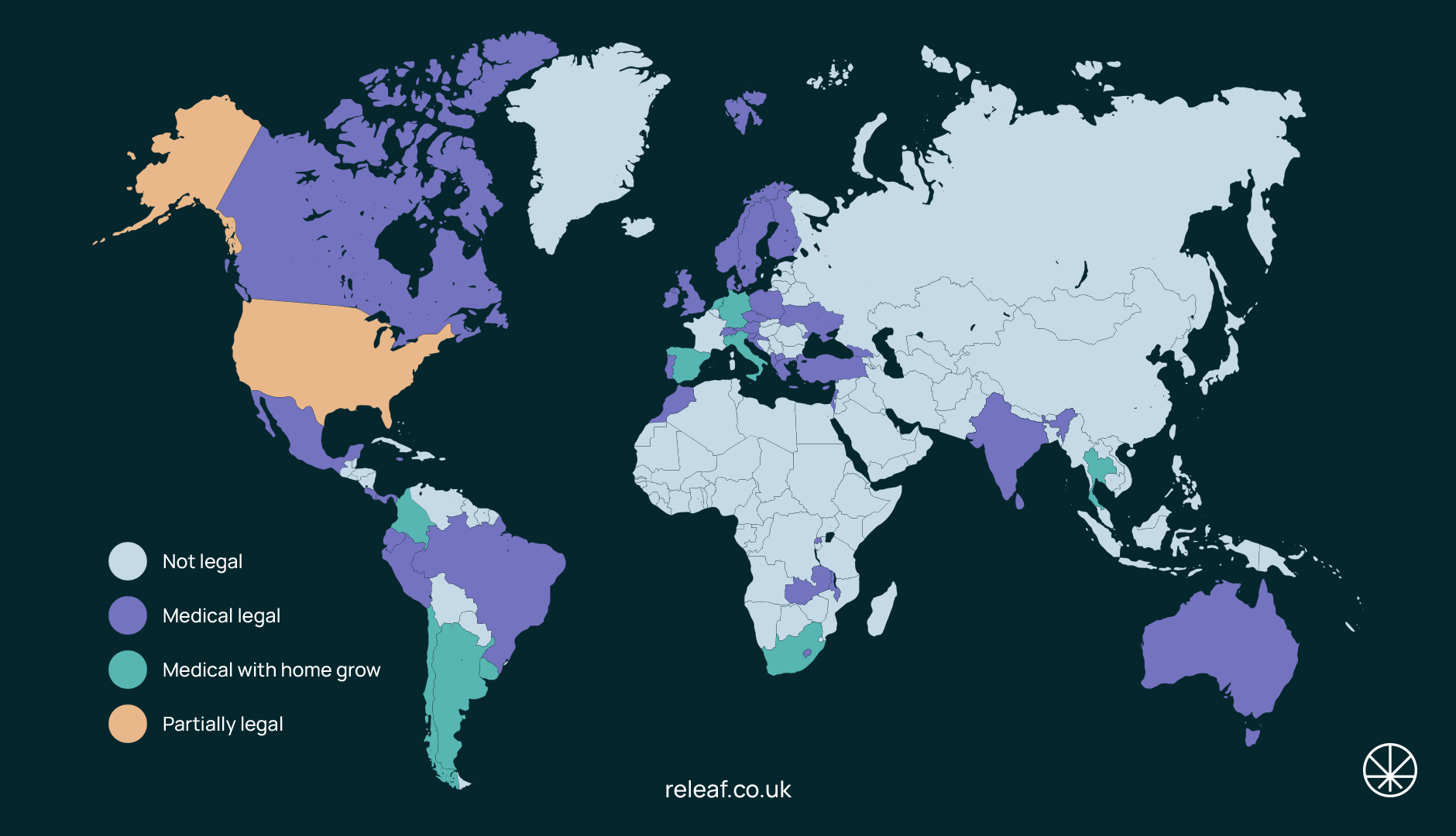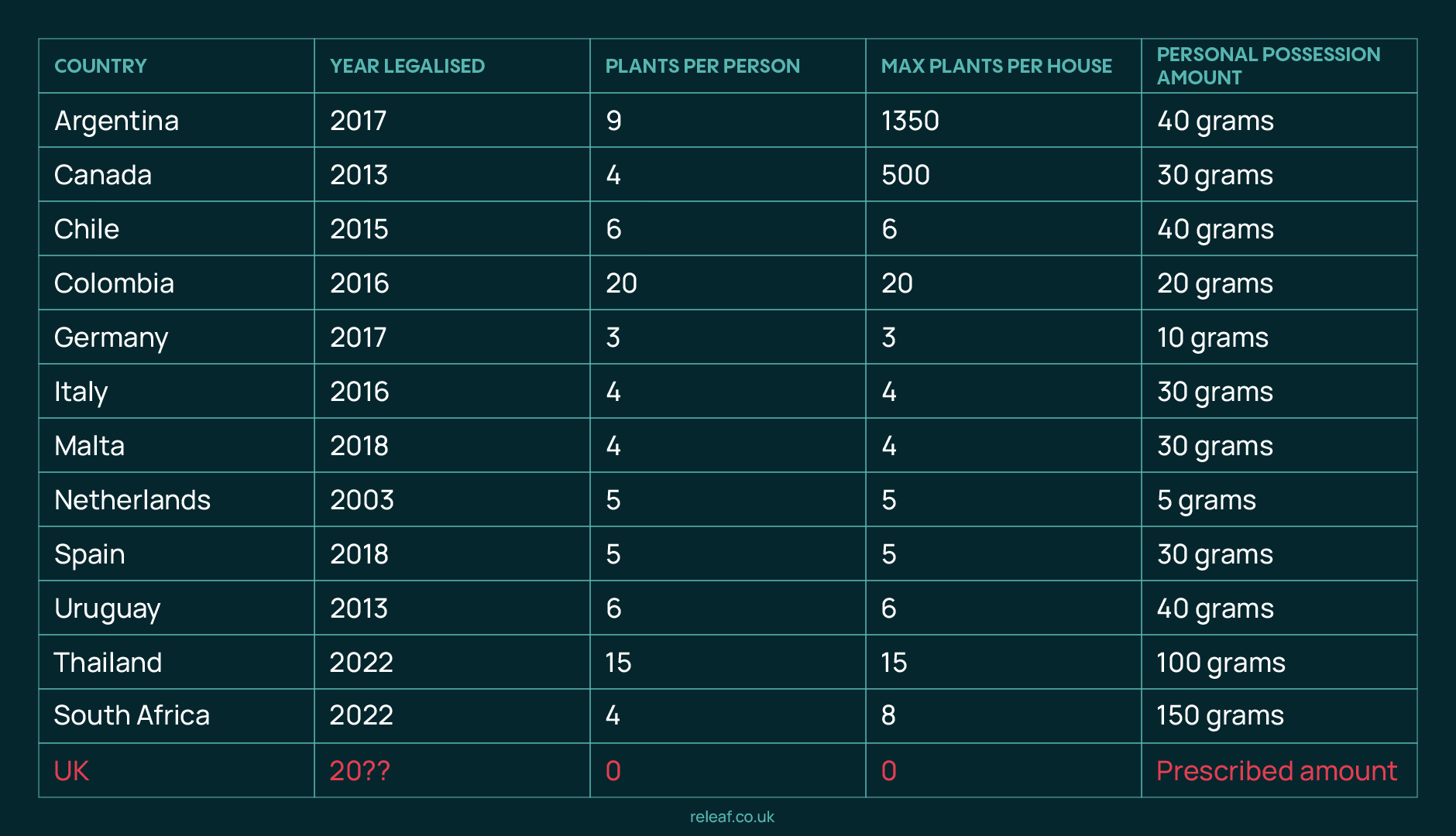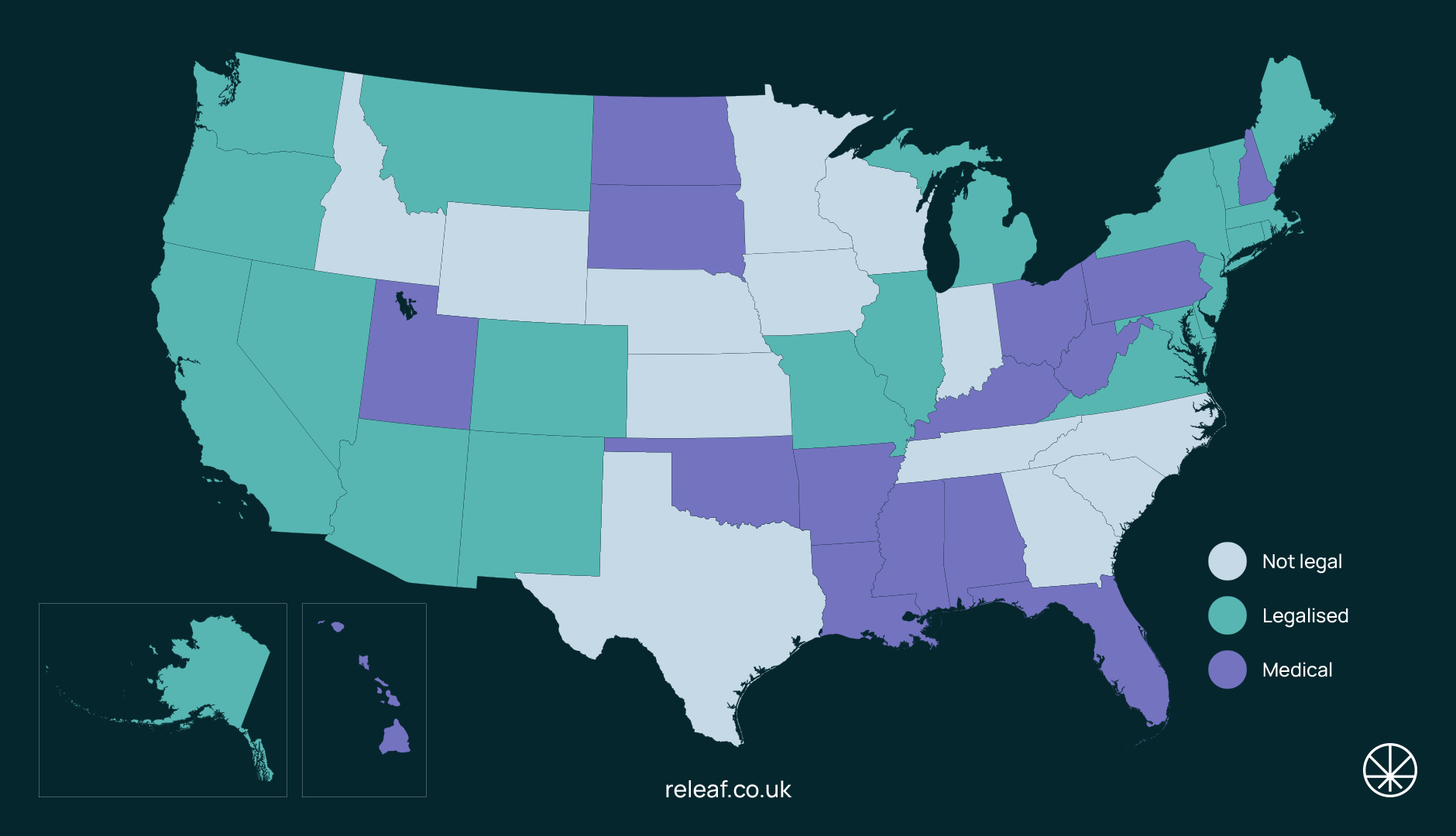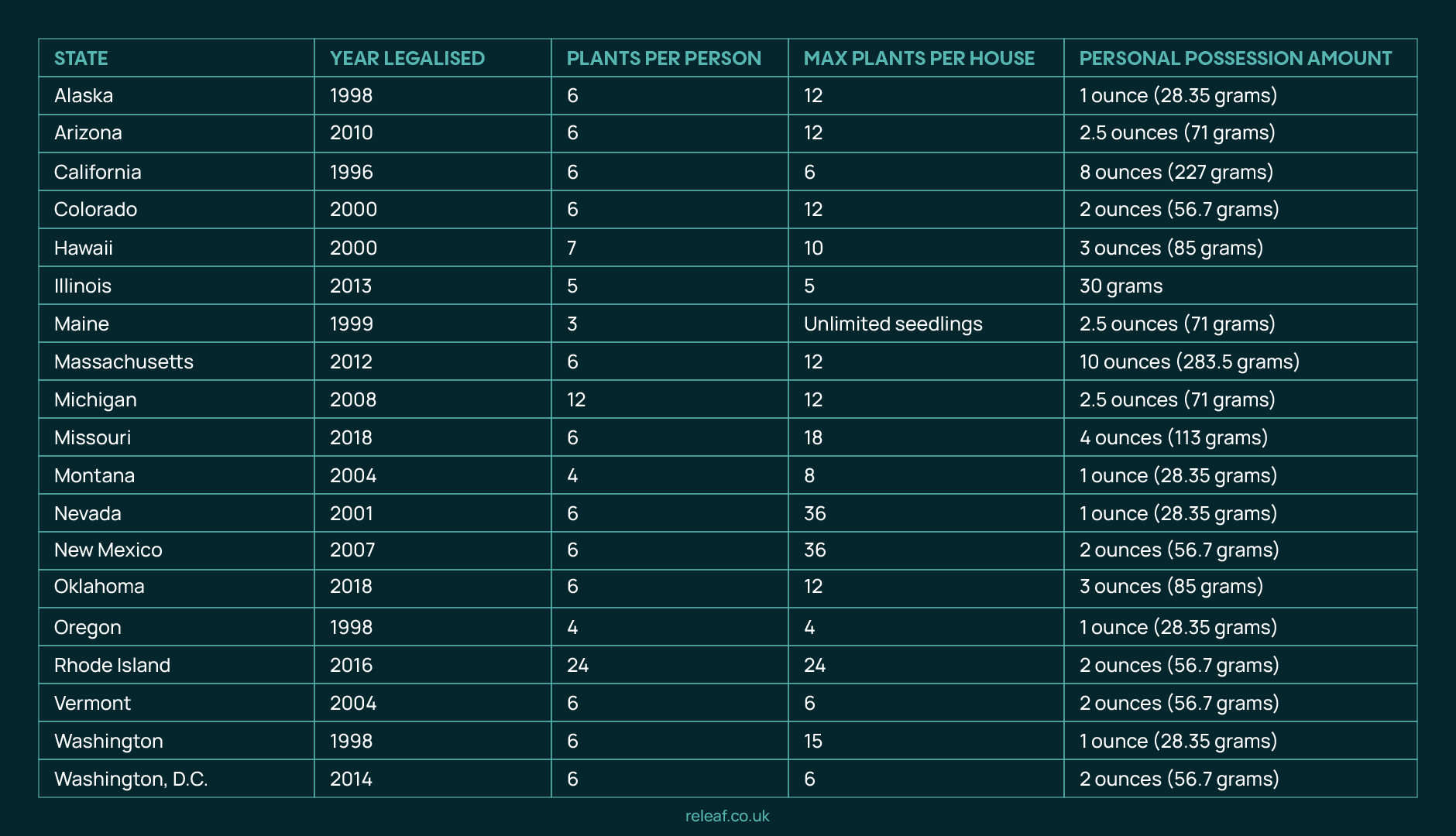No grow for UK patients: Where in the world can patients grow their own?
17 min read
Editorial Team
Contents
Going global
Medical cannabis is an area of policy that almost 70 nations worldwide have taken steps to legalise and regulate. A result of this is a variation in law influenced by policymakers and local culture. How companies operate and dispense medicinal cannabis products and how patients are governed can look very different.
The first medical cannabis law
When the first medical marijuana bill was passed in California with Proposition 215 in 1996, it allowed patients to use cannabis with an exemption from the law, which meant the usual criminal sanctions did not apply to them if they were carrying under a certain amount. California Healthcare professionals were able to write patients a letter of recommendation which gave them the ability to possess cannabis and even grow it for personal use - or for another patient who was unable to produce it for themselves. This created a caregiver model for patient access, eventually becoming medical marijuana dispensaries. There are now 33 states with some form of medical marijuana law, and patients can grow in 19.
Medical cannabis in the UK
Medicine is an institution and has a set of guiding principles. Medicines are highly regulated products in the UK following international drug conventions. Due to this fact, there is a difference between medicinal cannabis and using cannabis medicinally.
Medicinal cannabis is cannabis flowers grown for medicinal purposes and is a specific Cannabis Based Medicinal Product in its rawest form. How cannabis is grown and manufactured into an end product defines it as a medicine. The cultivation facility is regulated to specific standards to grow licensed cannabis. A manufacturing licence holder will carry out the trimming of cannabis flowers. It is prescribed by a specialist doctor and dispensed by a pharmacist through a chemist. All of these stages are subject to government inspections. It can only be possessed with a prescription.
People who claim to use cannabis medicinally may not be using medicinal cannabis prescribed by a doctor, but they are using cannabis from another source to treat a medical condition or a set of symptoms. This kind of use is also referred to as therapeutic rather than medical by qualified medical practitioners due to the lack of professional oversight and absence of regulation during the cannabis production stages.
Cannabis not produced under regulated and licensed conditions cannot have the same quality and efficacy assurances as medicinal cannabis. Cannabis bought from the illicit market may have hidden risks, such as contamination with chemical pesticides and mould, which could be dangerous to someone with a compromised immune system.
In the UK, patients are not permitted to grow their own medicine at home. The law does not allow patients to buy or possess cannabis grown by anyone anywhere else.
Who can grow cannabis in the UK?
The Home Office must grant you a licence before you can grow cannabis in the UK. Licences can cost several thousand pounds. To be granted a licence successfully, you must first have suitable premises, away from public access and with high security. The bureaucratic process is time-consuming and requires experienced lawyers. The process is not simple, something made obvious by the minority of UK companies who have successfully obtained one. These requirements are more costly than the licence itself, with the ongoing running costs being a significant factor.
To achieve accredited Good Manufacturing Practice (GMP) status in the UK, cultivation facilities must show they can produce crops consistently. This means the produce must test the same or within a 10% difference every harvest. During this period, no product grown can be used even if it meets the required specifications. It may seem wasteful, but it has to be destroyed in the presence of a police officer until batch-consistent approval is met.
Why does the government restrict patients from cultivating cannabis in the UK?
The Home Office have stated they do not plan to allow individuals to grow cannabis at home for personal or medical use. The government believes licence holders must produce medicinal cannabis-based products under strict conditions subject to surprise spot inspections.
Growing cannabis legally to medical standards is important. Cannabis growing regulations are imposed to control the quality of the products and to protect patient safety. Facilities must operate under Standard Operating Procedures (SOPs) to produce CBMP that meet EU Good Manufacturing Practice (EU GMP). Products must meet safety profiles to ensure they only contain the expected ingredients and no dangerous compounds, chemical or biological contamination.
With this in mind, the government has only allowed companies the legal right to produce medicinal cannabis. Patients are not extended the same trust to produce their supply of medicinal cannabis that meets the standards required to pass through regulatory hurdles.
The Medicines and Health Regulatory Authority (MHRA) are not equipped to hold personal home medicinal cannabis growers to the same accountability and stringent regulations that multi-million-pound licence holders must adhere to, charging licence holders for inspections. Patients could meet EU GMP standards with home cultivation if they followed the same processes, but inspection costs would potentially make it an unreasonably costly pursuit.
Regulations: Quality control of medicinal cannabis-based products
The government requires licensed cannabis cultivators to keep strict records of all of their produce and waste and where it is sold and sent to as part of keeping it a controlled substance. This element of the process and supply chain is controlled by the UN Single Convention on Narcotic Drugs 1961, which threatens to impose sanctions on nations that allow the production and trade of listed substances, of which cannabis is one. Therefore, the UK government continues prohibiting personal cannabis cultivation for medical use.
Cannabis must be tested with specific analysis equipment in a scientific lab to determine if it is of a medicinal standard. Labs must screen products for cannabinoids, terpenes, heavy metals, pesticides, microbial load and biological or chemical contamination. Aspergillus is potentially one of the most dangerous moulds that can be found in cannabis, especially in immunocompromised patients, but the UK regulators do not test for this yet. These tests are individually costly and, when combined, can become unaffordable for people on an average income, even if the law was such that a patient could grow their own and send it off for analysis.
Transport, supply, distribution, and safety screening factors are reasons the government does not allow patients to grow their own.
Which countries allow patients to grow under medicinal cannabis laws
Click image to enlarge
Canada: Canada legalised medical cannabis in 2001 and allows authorised patients to grow cannabis plants or designate someone to grow them on their behalf, subject to specific limits and regulations. Patients and all citizens can grow up to four plants at home without a licence. Patients who need a high amount of cannabis can apply for an Access to Cannabis for Medical Purposes Regulations (ACMPR) licence and grow up to 500 plants.
Germany: Germany legalised medicinal cannabis in 2017 and allows patients with certain medical conditions to access CBMP with a prescription through pharmacies. There are circumstances where they can be granted permission to grow their own if no other treatment options are available or affordable. Patients get permission to cultivate their cannabis plants through the Federal Institute for Drugs and Medical Devices (BfArM), but only when no other treatment options are available or affordable. The law does not state a specific amount of plants per patient and is determined by the individual's case. Germany will soon allow all adults to grow three plants each.
Thailand: Thailand legalised medicinal cannabis in 2022 and launched the policy by giving away one million free medicinal cannabis plants. Adults can grow up to 15 cannabis plants per household and must register with the Federal Drug Administration, but there are no limits currently set on plant numbers. Growers must be licensed to sell cannabis products to adults 20 and over unless they are pregnant or breastfeeding. Households may also grow up to 5 rai (1.97 acres) of hemp for personal use.
Australia: Australia legalised medical cannabis at the federal level in 2016, allowing licensed companies to grow and produce CBMP for prescription and export. Each state and territory has its regulations. Canberra is the only jurisdiction to allow patients to cultivate cannabis for medical purposes. Adults can have two plants each or a maximum of four plants per household for personal use, and no sales are allowed.
Spain: Spain has no official medical cannabis cultivation policy but allows personal cannabis use on private property. The country allows different regions to govern the issue with their own approach. Catalonia and the Basque Country allow patients to grow cannabis for personal use. Cannabis social clubs exist where patients can have an association to grow cannabis plants for them, and they can be accessed through a club.
Netherlands: Dutch patients can grow five plants outdoors under natural sunlight without criminal punishment, but may be asked to hand them over to police if they are asked to. The law is a tolerance policy rather than a legislated limit and is not designed to allow or encourage cultivation. Indoor cultivation is strictly forbidden and carries a risk of criminal prosecution.
Uruguay: Uruguay was the first country to legalise cannabis nationally in 2013. Patients can grow up to 6 plants at home. Those who do not want to or can not grow their own plants can opt for access through a pharmacy which limits them to 40g per month (10g per week). Patients who need more than six plants can provide, or a pharmacy can offer can join a cannabis social club where they grow collectively and share the produce.
Below is a list of countries that have legalised cannabis cultivation for medicinal purposes at a national level. These laws are for citizens only and do not apply to tourists travelling to each country. Take a look at how many plants patients can grow in other countries.
Click image to enlarge
Personal medical cannabis cultivation in the US
There are 38 states with legal laws that allow cannabis for medicinal use, and 33 of those have also legalised recreational cannabis. Only 19 in 33 states with medical exemption laws allow patients to grow their own. These laws apply to residents and it is not intended to encourage cannabis tourism to the states.
Click image to enlarge
As you can see, the number of countries and states that have taken a more relaxed approach to medicinal cannabis than the UK is growing and the impact of a change in policy is still yet to be measured and assessed. For the time being, the UK government will continue to restrict medicinal cannabis as a prescription only medicine.
Click image to enlarge
Here is a list of countries that have legalised medical cannabis in some form.
Albania
Argentina
Australia
Austria Barbados
Bermuda
Brazil
Canada
Chile
Colombia
Costa Rica
Croatia
Cyprus
Czech Republic
Denmark
Ecuador
Finland Licenced Only
Georgia
Germany
Greece
Ireland
India
Israel
Italy
Jamaica
Lebanon
Lesotho
Luxembourg
Malawi
Malta
Mexico
Morocco
Netherlands
New Zealand
North Macedonia
Norway
Panama
Peru
Poland
Portugal
Rwanda
Saint Vincent and the Grenadines
San Marino
Slovenia
South Africa
Spain
Sri Lanka
Sweden
Switzerland
Thailand
Turkey
Ukraine
UK
Uruguay
Vanuatu
Zambia
Releaf understands the importance of medical cannabis in treating various medical conditions. With our tailored monthly packages, specialist consultations for medical cannabis, and a unique medical cannabis card for protection, you can access the treatment you need without worrying about the stigma.
Medical Cannabis FAQs:
Can I grow my own medical cannabis legally in the UK if I have a prescription?
No, The government do not permit you to grow medical cannabis in the UK legally. Only companies with a licence can cultivate cannabis for specific purposes.
How to legally grow medical cannabis for dispensaries in the UK
To legally grow medical cannabis for patients prescribed in the UK you must have a licence from the UK Home Office.
Is it legal to get a cannabis cultivation licence in the UK?
You can apply for a licence to cultivate cannabis for medical purposes legally in the UK. There are costs involved, and the application process is stringent. You can find out How to get a license to grow medical cannabis from the government website here.
Where is medical cannabis grown for UK patients?
The medical cannabis that UK patients are prescribed comes from multiple countries. Those countries are:
- Canada
- Portugal
- Columbia
- Macedonia
- South Africa
- Lesotho
- Germany
Is growing CBD plants legal in the UK?
Patients cannot legally grow CBD plants as hemp is still cannabis, and you need a licence to grow hemp too. You must have land to grow hemp away from public footpaths and have good security. The end product can only be used for seeds and fibre, processing hemp for CBD isn’t possible legally in the UK without a further manufacturing licence.
Is medical cannabis tourism legal?
Due to the different laws countries have for medical cannabis, it is very important to know what they are before you travel. Regulations vary, so what may be permissible in one country may be against the law in another. Releaf has a helpful and dedicated travel section in our Education suite to help guide you to more appropriate information sources.
Can you grow your own cannabis medically if you move to a country where it is legal?
If you are leaving the UK for greener grass and want to know if you can grow your own medical cannabis because you have seen it is legal, you should apply through the system provided. Always follow all local and national laws and bylaws surrounding the medical cannabis cultivation process.
Do countries where it is legal teach you how to grow medical cannabis?
In countries where it is legal to grow your own medical cannabis, there are communities and courses to teach you how to grow good quality, safe and effective medical cannabis at home. In Oakland, California, for example, teachers at Oaksterdam University provide courses with certification to train people to go into the medical cannabis cultivation workforce and produce high-quality medical cannabis products.
What happens if I am caught growing my own medical cannabis in the UK?
If you are caught growing cannabis for medical reasons in the UK you will find yourself in a difficult legal situation. The police may want to prosecute you for breaking the law as home growing or cultivating without a licence is an offence under Section 23 of the Misuse of Drugs Act 1971.
The number of plants you are found with will depend on the charge you face and the type and severity of the punishment you receive if you are found guilty. Medical cannabis is considered a mitigating circumstance, but it is not a “get out of jail free” card, nor will it deter judges from handing down a sentence.
Is home-grown medical cannabis quality good?
Homegrown medical cannabis quality will depend on the genetics of the seeds or clone used, the health of the soil, the spectrum of light, the nutrients used, the time it takes to reach harvest, the air quality, and the way it is dried and stored.
Is there any medical cannabis quality control for home growers anywhere in the world?
Sadly for home growers, testing facilities aren’t as accessible as many would like access. In some states, there are labs that patients can access, but the costs are high. They offer facilities to show cannabinoids, terpene, heavy metals, pesticides and other contamination levels. Medical cannabis policy around the world is still in its infancy, and there is still time.
What is the difference between a home cannabis grow and a medical cannabis grow facility?
There are differences between growing cannabis at home and an indoor medical cannabis grow facility. From the scale to the level of regulation that happens at each stage, a legal cannabis growing facility is essentially a cannabis factory dedicated to the production of cannabinoids. The goal of medical cannabis facilities is to produce a standardised product that matches lab results within an acceptable range for each crop. Home-grown cannabis is done in a smaller space or even outdoors, and unless the cultivator is taking the same level of precautions to monitor air, light and feed quality to a standardised operating procedure, results may vary from crop to crop.
What are the stages of growing and preparing medical cannabis?
Cannabis plants must first be grown from seed or cut to a mature vegetative stage under 18 hours of light, which takes approximately four weeks. Cultivators will then change the light period to 12 hours, where the plants will stay for another 8-10 weeks before being harvested. Once chopped down, plants go through a trimming process where the excess leaves are removed. The finished flowers are dried and trimmed one last time before being tested for quality, cannabinoid and terpene levels.
Share article
Did you like this article?
It is important to seek medical advice before starting any new treatments. The patient advisors at Releaf are available to provide expert advice and support. Alternatively, click here to book a consultation with one of our specialist doctors.
Elevate your wellness with medical cannabis
Get comprehensive care, convenience, and confidence with an all-in-one treatment plan.
Am I eligible?Authors
Editorial Team
Article written by the Releaf Editorial Team, a group of seasoned experts in cannabis healthcare, dedicated to enhancing awareness and accessibility in the field through their wealth of knowledge and experience.
fact checked
Compliance Director
Editorial Policy
All of our articles are written by medical cannabis experts, guided by strict sourcing guidelines, and reference peer-reviewed studies and credible academic research. Our expert clinical team and compliance specialists provide valuable insights to ensure accuracy when required. Learn more in our editorial policy.
Need more help?









